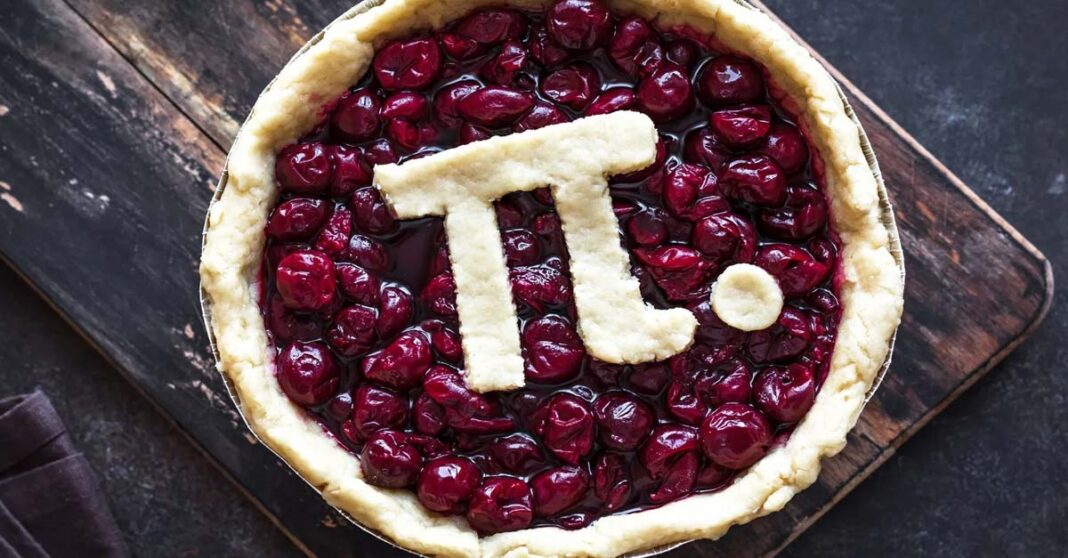Every year on 14 March, mathematicians, educators, and enthusiasts around the world gather to celebrate Pi Day. This annual event commemorates the mathematical constant π (pi), which represents the ratio of the circumference of a circle to its diameter.
Pi Day is celebrated on the same date every year, with this year occurring on Thursday, 14 March.
What is Pi?
Pi is approximated as 3.14, but its decimal form goes on forever. It is a fundamental constant in mathematics. It’s a symbol of infinity, representing a number that extends endlessly without repeating. The significance of pi lies in its application in solving problems related to circles and curves, making it a cornerstone of geometry and calculus.
According to the Guinness World Records, the most precise calculation of Pi spans over 62 trillion digits (specifically 62,831,853,071,796). This achievement was accomplished by the University of Applied Sciences in Switzerland in August 2021.
Why 14 March?
March 14th (3/14) was chosen as Pi Day due to its numerical resemblance to the first three digits of pi. However, the date format aligns with countries like the United States, where dates are written as month/day. In other regions where the day/month format is common, the significance of Pi Day may not be as apparent.
On the flip side, in many countries, the typical date format is day/month, so Pi Day would be written as 14.3. This format doesn’t align with the essence of celebrating Pi (π), which starts with 3.14. Consequently, some countries propose either discontinuing Pi Day or alternatively celebrating it on Pi Approximation Day (22 July, written as 22/7) or Tau Day (June 28, written as 6/28, equivalent to 2 Pi) to better correspond with the significance.
Pi Day Activities
Pi Day isn’t just about mathematics; it’s also an opportunity for people to enjoy one of the most popular desserts: pie. Whether it’s apple, cherry, pecan, or pizza pie, people enjoy savoring this delicious treat on Pi Day. Bakeries, restaurants, and community groups, mostly in the US, often host pie-baking contests, pie-eating contests, or pie-themed events, and they may offer special deals, such as pizza pies priced at USD 3.14, to mark the occasion.
The combination of mathematics and pie makes Pi Day a unique and enjoyable celebration for people of all ages.
Another popular activity associated with Pi Day is the recitation of pi’s digits. Many enthusiasts challenge themselves to memorize and recite as many digits of pi as possible. While Pi is an irrational number with an infinite number of decimal places, some individuals have memorized tens of thousands of digits.
Also, educators often use Pi Day as an opportunity to engage students in fun and interactive mathematics lessons, with teachers organizing pi-themed games, competitions, or classroom activities that explore the significance of pi in geometry, physics, and engineering.
How Pi Day Started
Pi, the mathematical constant that has fascinated scholars for millennia, took center stage once again in 2015 when Rajveer Meena, hailing from Rajasthan’s Sawai Madhopur, clinched a global achievement memorizing a staggering 70,000 decimal places of Pi. Blindfolded and undeterred, he spent 10 hours meticulously recalling each digit, captivating audiences worldwide.
Originating in the late 1980s at the San Francisco Exploratorium, Pi Day has evolved into a cultural phenomenon, with enthusiasts marking the occasion with mathematical challenges, pie-themed festivities.
The journey of Pi itself is steeped in history, tracing back over 4,000 years to ancient civilizations grappling with the mysteries of geometry. However, its symbol, π, as widely recognized today, was introduced over 250 years ago by Welsh mathematician William Jones.
Yet, the quest for precision has not been without its challenges, as exemplified by the 19th-century endeavor of British mathematician William Shanks. Despite his ambitious attempt to calculate Pi to 607 decimal places, an error in the 527th digit tarnished his efforts.
More recently, In the late 1980s, the origins of Pi Day started when physicist Larry Shaw, a staff member at the San Francisco Exploratorium, started celebrating the day with his colleagues. Shaw and his fellow physicists gathered at the Exploratorium, walked around a circular space, and enjoyed pies to honor the mathematical constant pi.
The tradition soon caught on, and Pi Day has since become a global phenomenon, with the US Congress officially designating 14 March as National Pi Day in 2009.
14 March is More Than Pi
This day holds additional significance in the scientific community. It marks the birthday of Albert Einstein, one of history’s most influential physicists It also serves as a day of remembrance for Stephen Hawking, another luminary in theoretical physics who passed away in 2018. is contributions to our understanding of the universe continue to inspire generations of scientists and thinkers.
Pi Day plays as a reminder of math’s beauty and universality, bringing together people from diverse backgrounds to celebrate a concept that goes beyond borders and languages. Whether it’s solving mathematical problems, eating pie, or marveling at Pi’s wonders, Pi Day is encouraging all individuals to embrace their inner mathematician and celebrate this extraordinary number.



